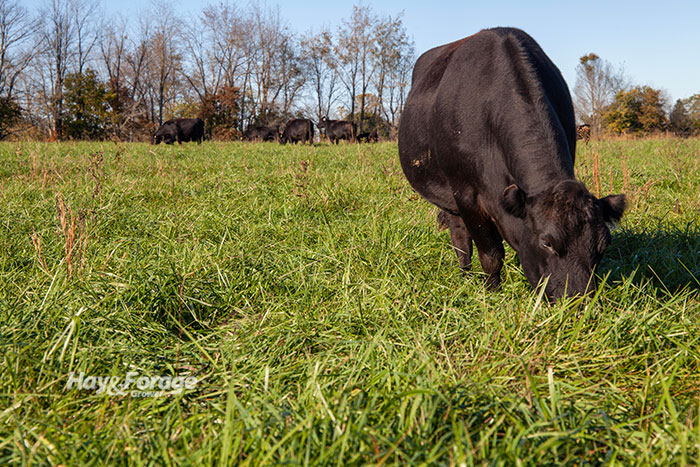Mixing tall fescue varieties shows benefits |
| By Mike Rankin, Managing Editor |
|
|
 Plant diversity has become somewhat of a buzz phrase in the world of agriculture. It sometimes refers to growing diverse crops from year to year but most often is associated with having different species growing in the same field or pasture at the same time. There is good scientific evidence to show that diverse mixtures enhance soil health and fertility attributes. Rebecca McCulley, a research professor with the University of Kentucky, decided to test diversity at the tall fescue varietal level. The results of the study were recently reported in the Alliance for Grassland Renewal’s newsletter by Alayna Jacobs, one of her former graduate students. The research compared mixtures of two-, three-, and four-way seed mixes of different tall fescue variety and endophyte sources to seedings of stands with a single variety. Varieties included Kentucky 31, both with and without the toxic endophyte, and several different novel endophyte varieties. The hypothesis was that a greater number of unique variety/endophyte combinations would make stands more productive, competitive, and sustainable. Five years after seeding and establishment, the field plots were evaluated to compare low diversity (monocultures of single varieties) to two-,three-, and four-way mixtures of different tall fescue varieties and endophyte characteristics. The field plots were harvested in the spring (April) and fall (September). There were no differences in the amount of tall fescue biomass produced in the spring, but the more diverse plots produced about 12% greater fescue biomass in the fall. The more diverse stands produced additional fescue in the fall because those stands limited the encroachment of other plant species such as orchardgrass and Kentucky bluegrass. Stands that included three variety/endophyte combinations were purer tall fescue stands compared to endophyte-free or single variety monocultures. The more diverse stands would offer producers the opportunity to stockpile higher amounts of tall fescue during the fall and reduce hay feeding. McCulley also found that greater tall fescue diversity improved several soil quality indicators. Soil phosphorus and potassium availability was enhanced in the top 4 inches of soil, and soil cation exchange capacity increased in the 4- to 8-inch soil depth range. More diversity resulted in lower soil carbon in the top 4 inches of soil but greater carbon at a 4- to 8-inch depth. The researcher notes that deeper storage of carbon is beneficial because it is less susceptible to losses associated with erosion, tillage, and other disturbances. Planting mixtures of two, three, or four different tall fescue varieties is an easy way to take advantage of the benefits offered by pasture plant diversity. Better yet, it’s an easy strategy to implement since it only involves mixing seed before loading it into the drill. |
